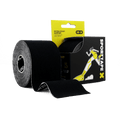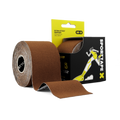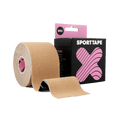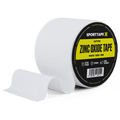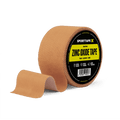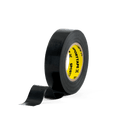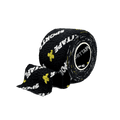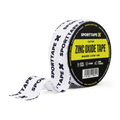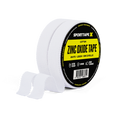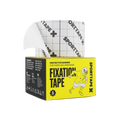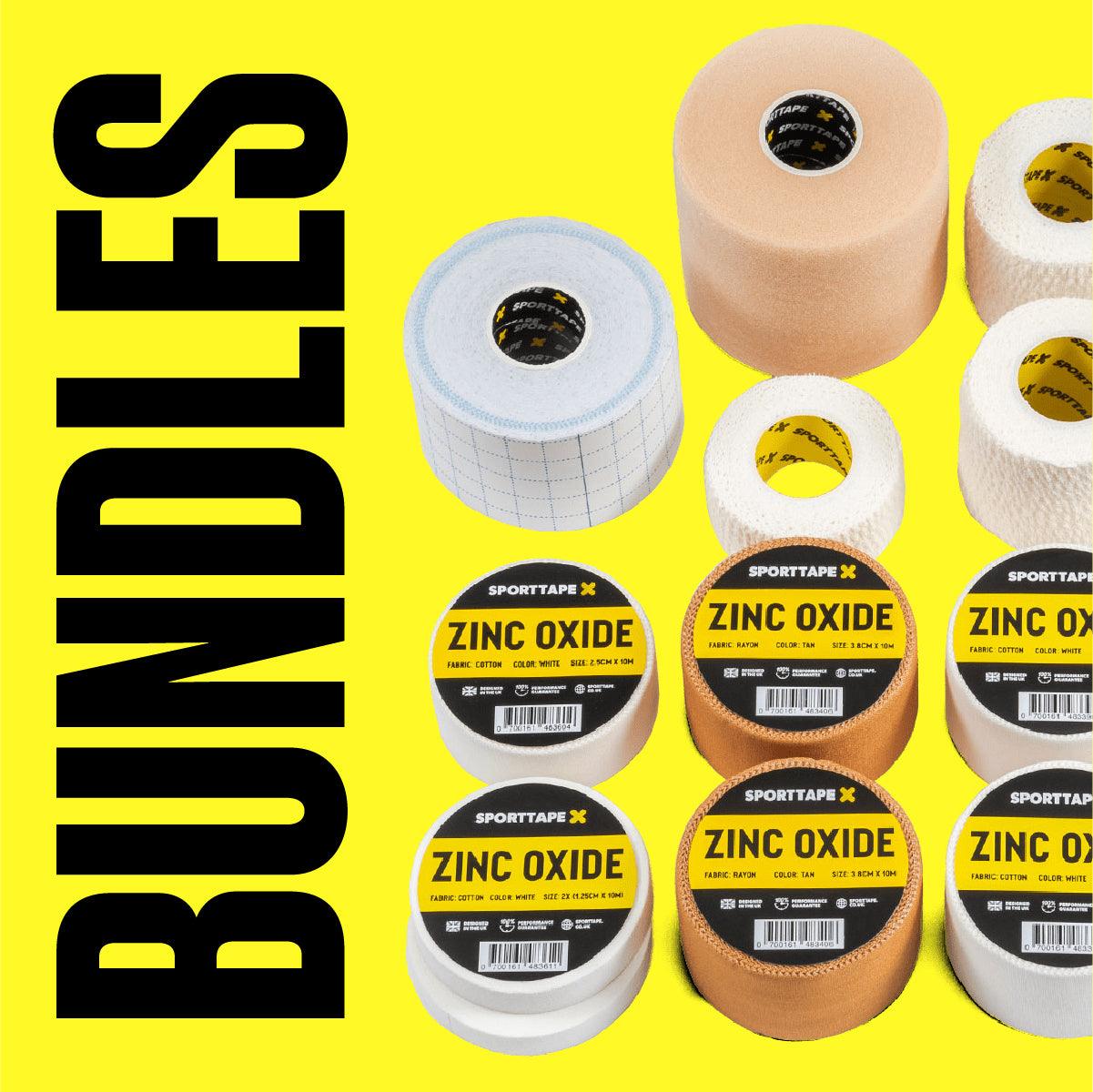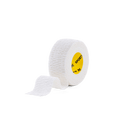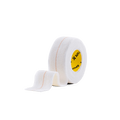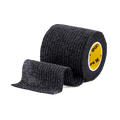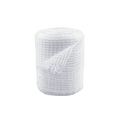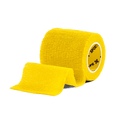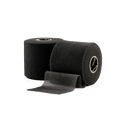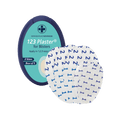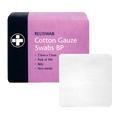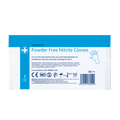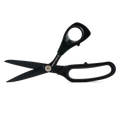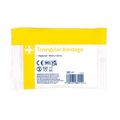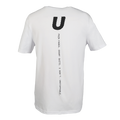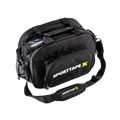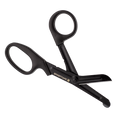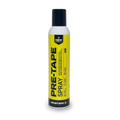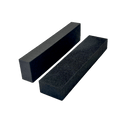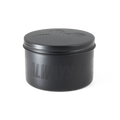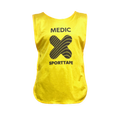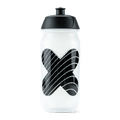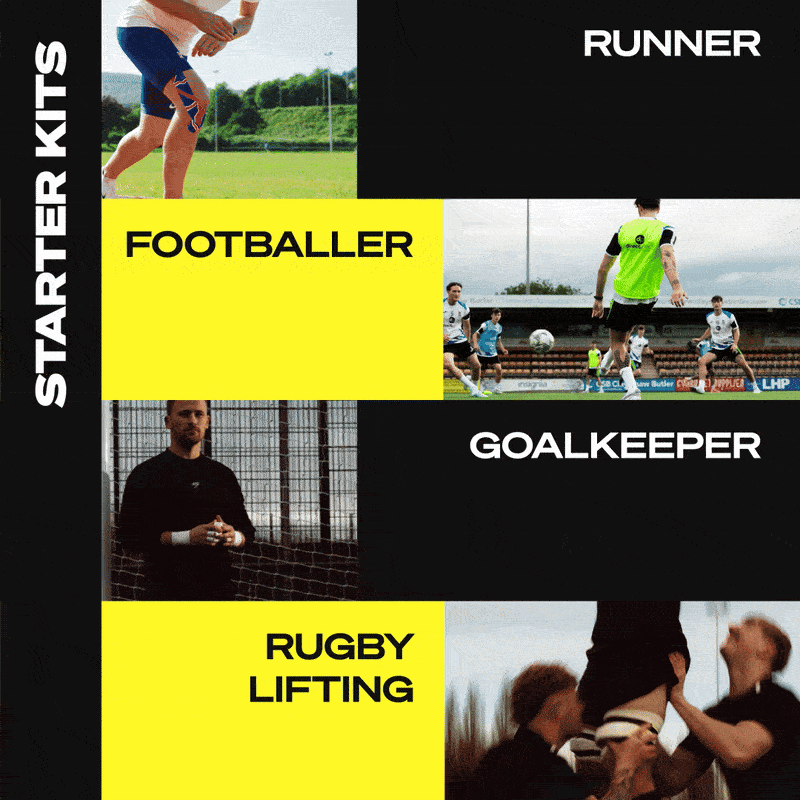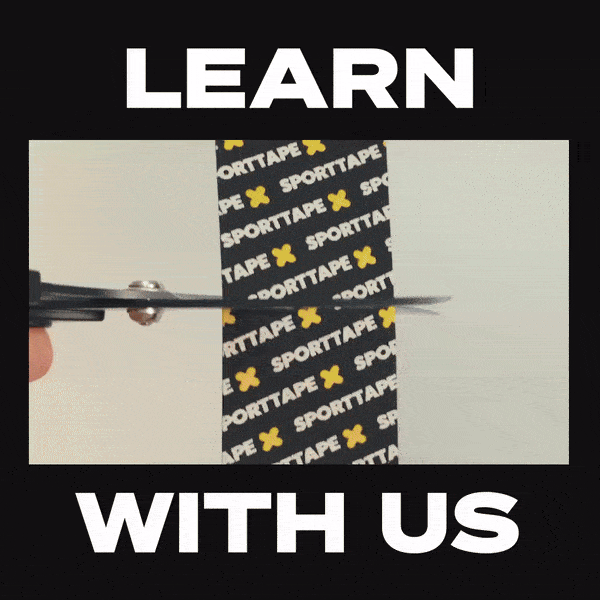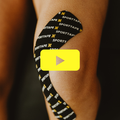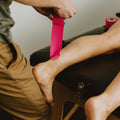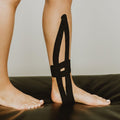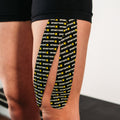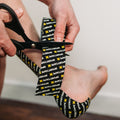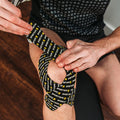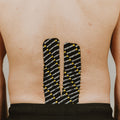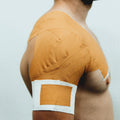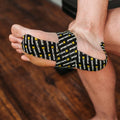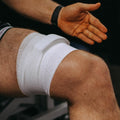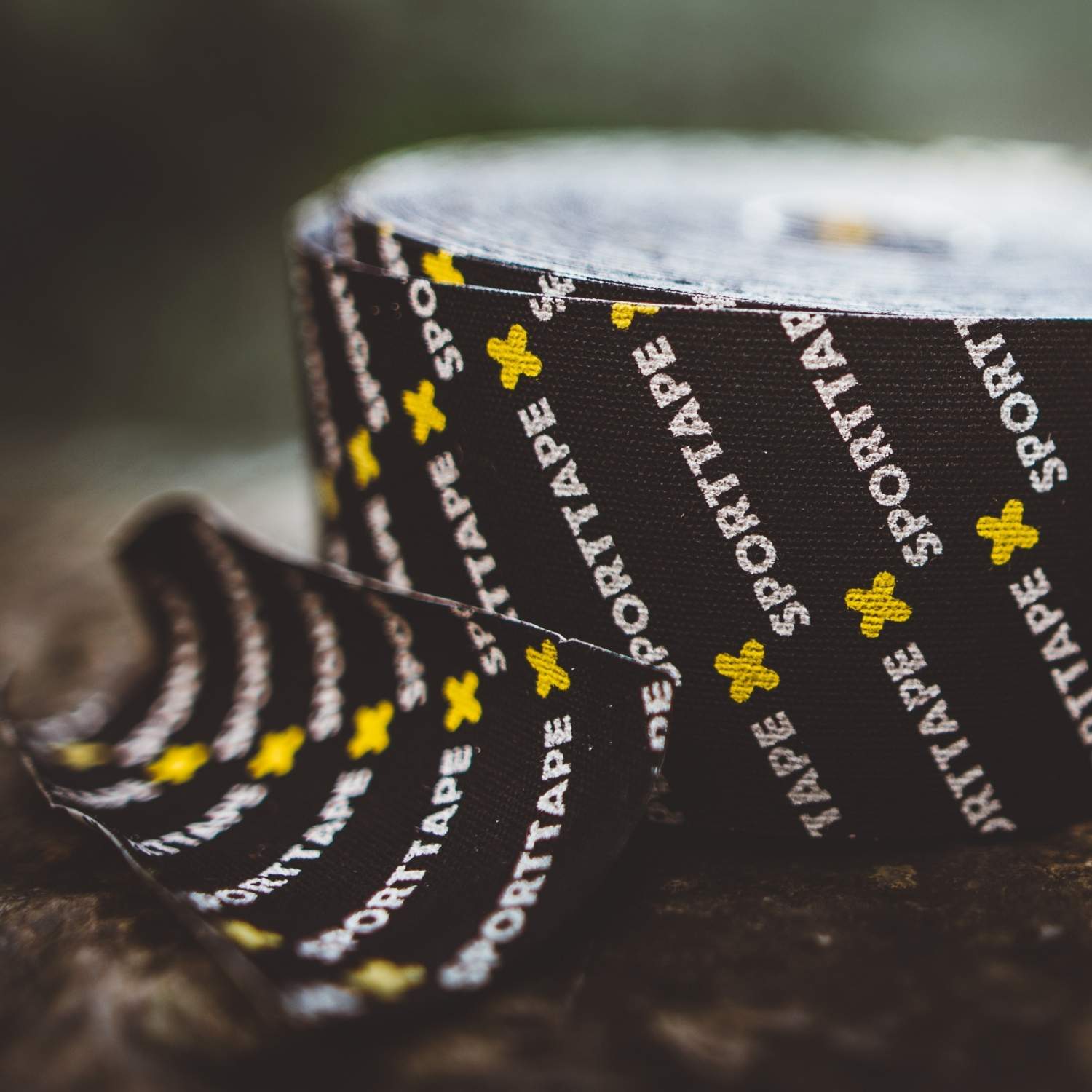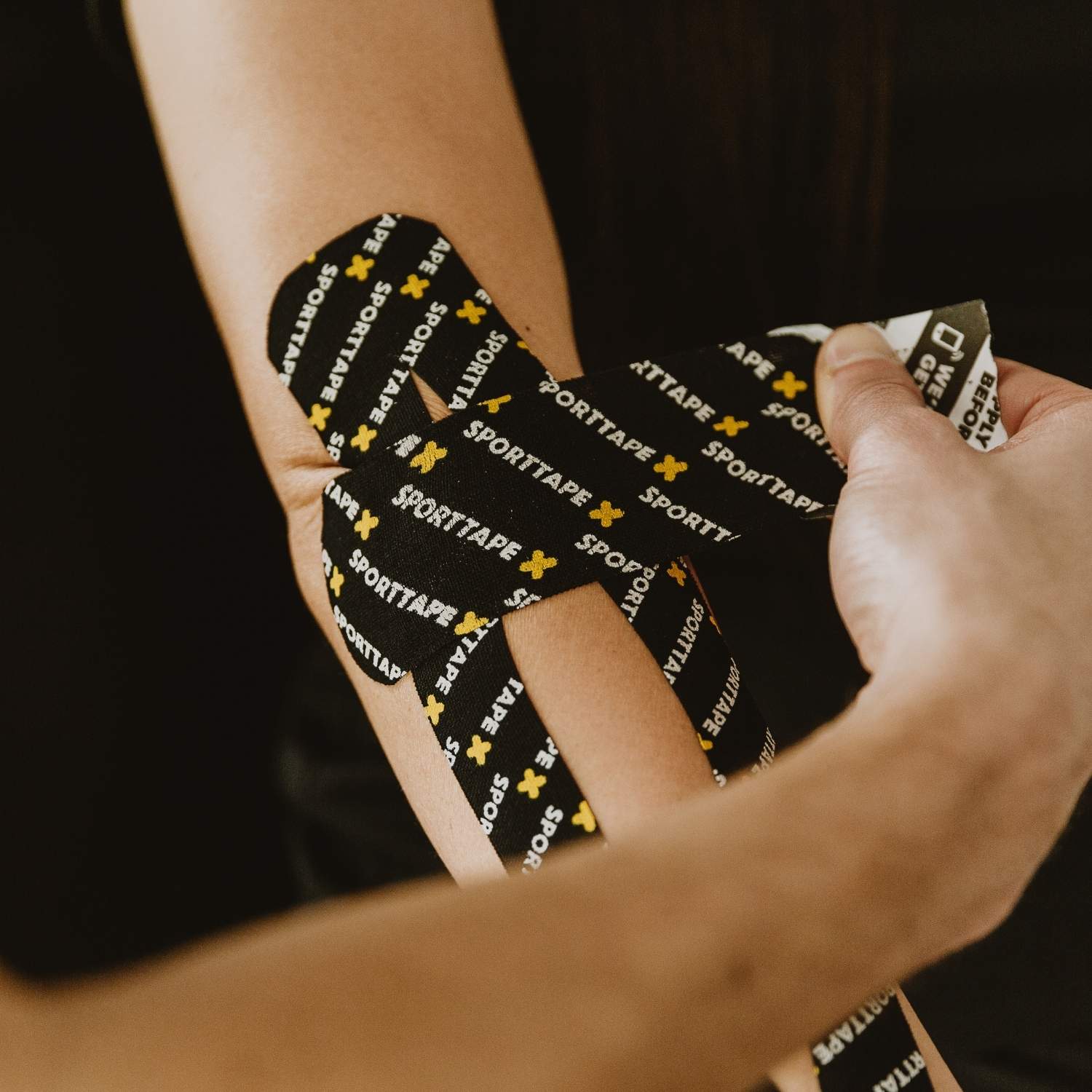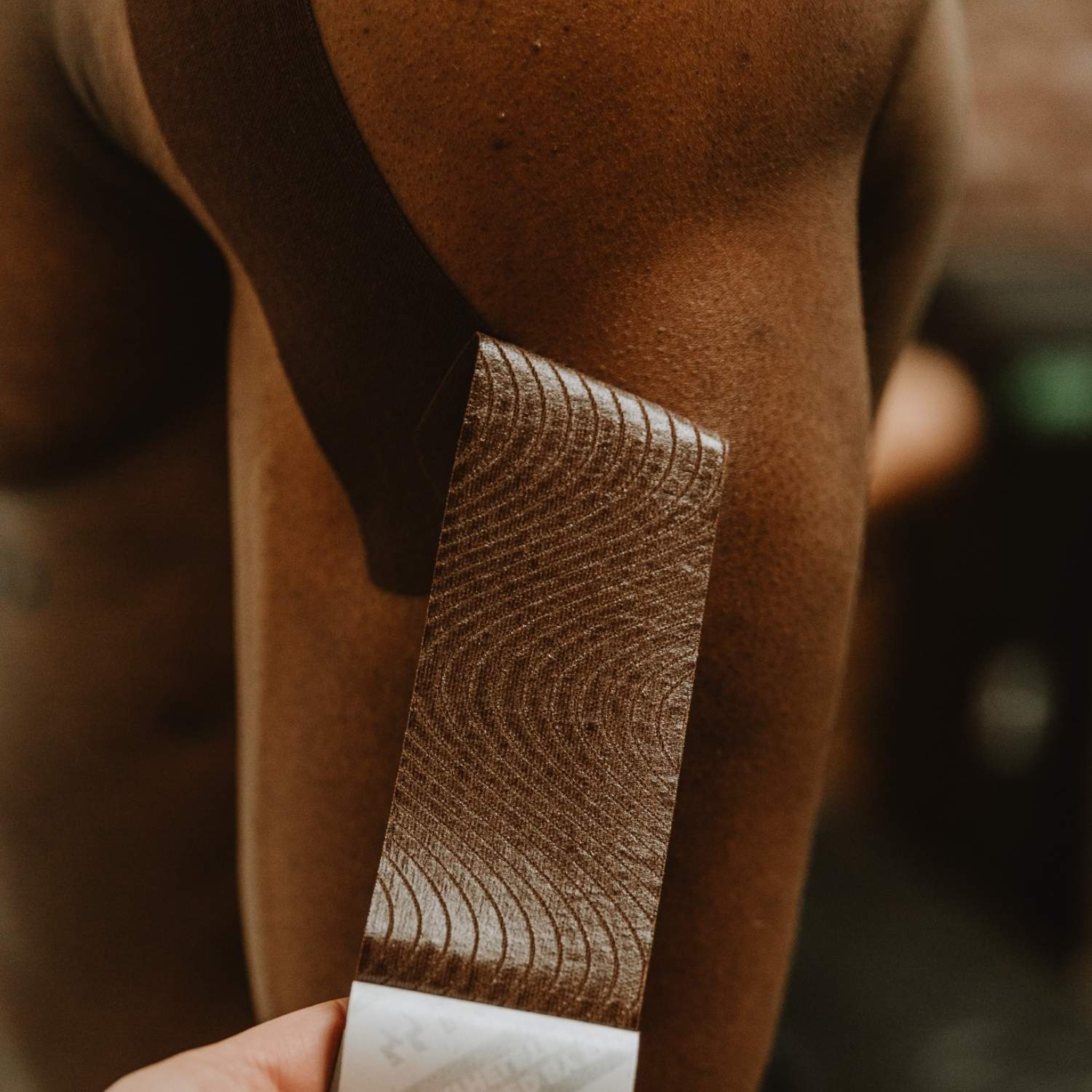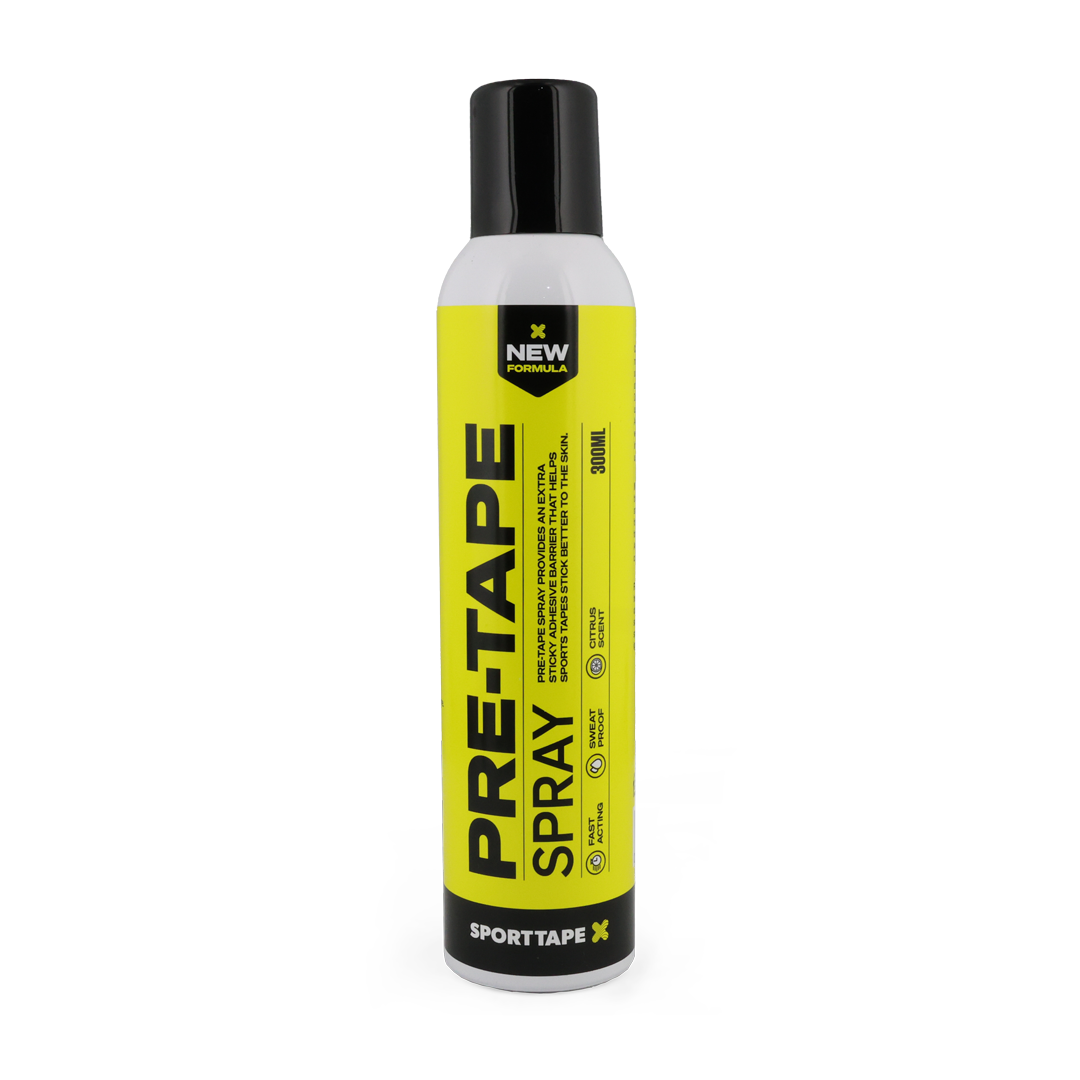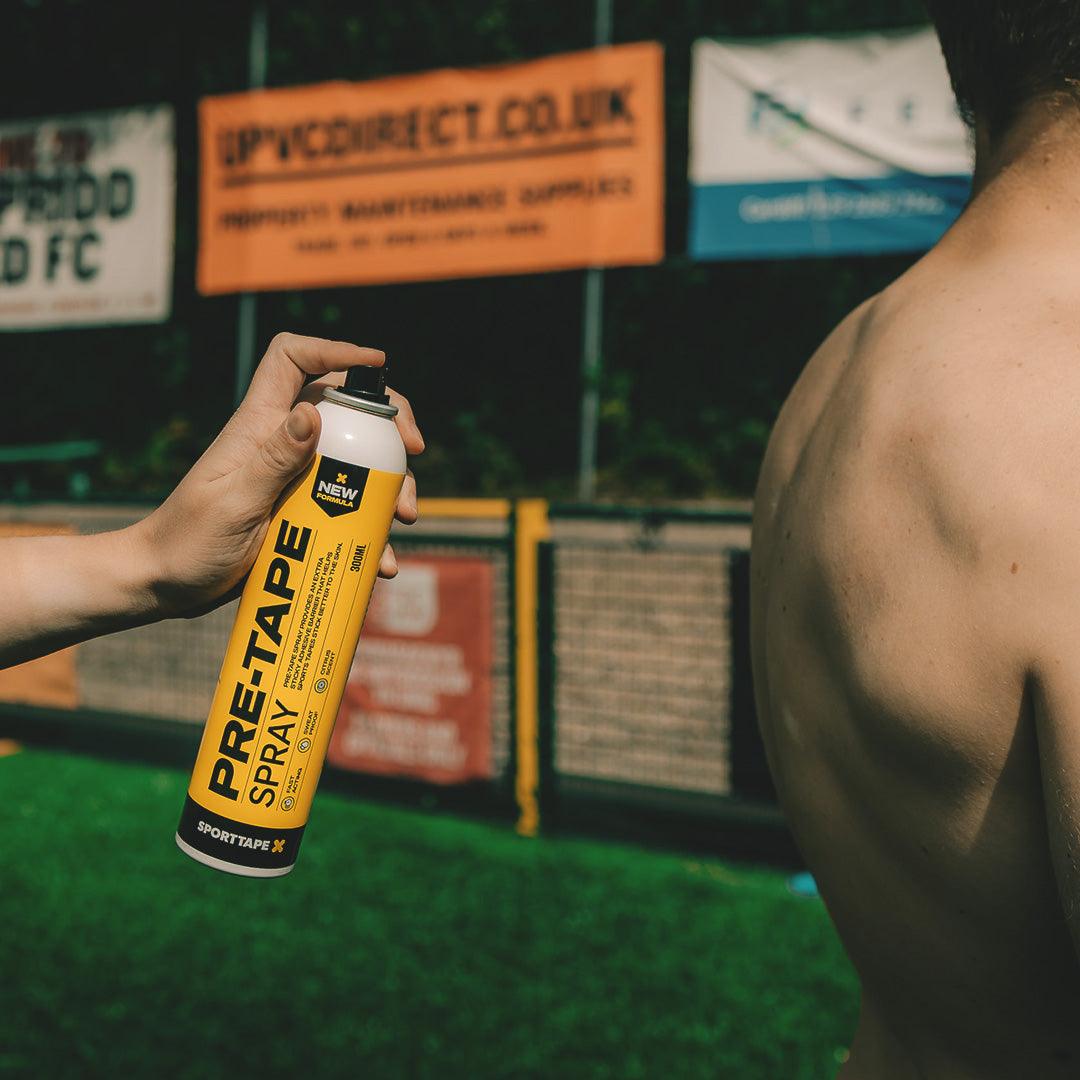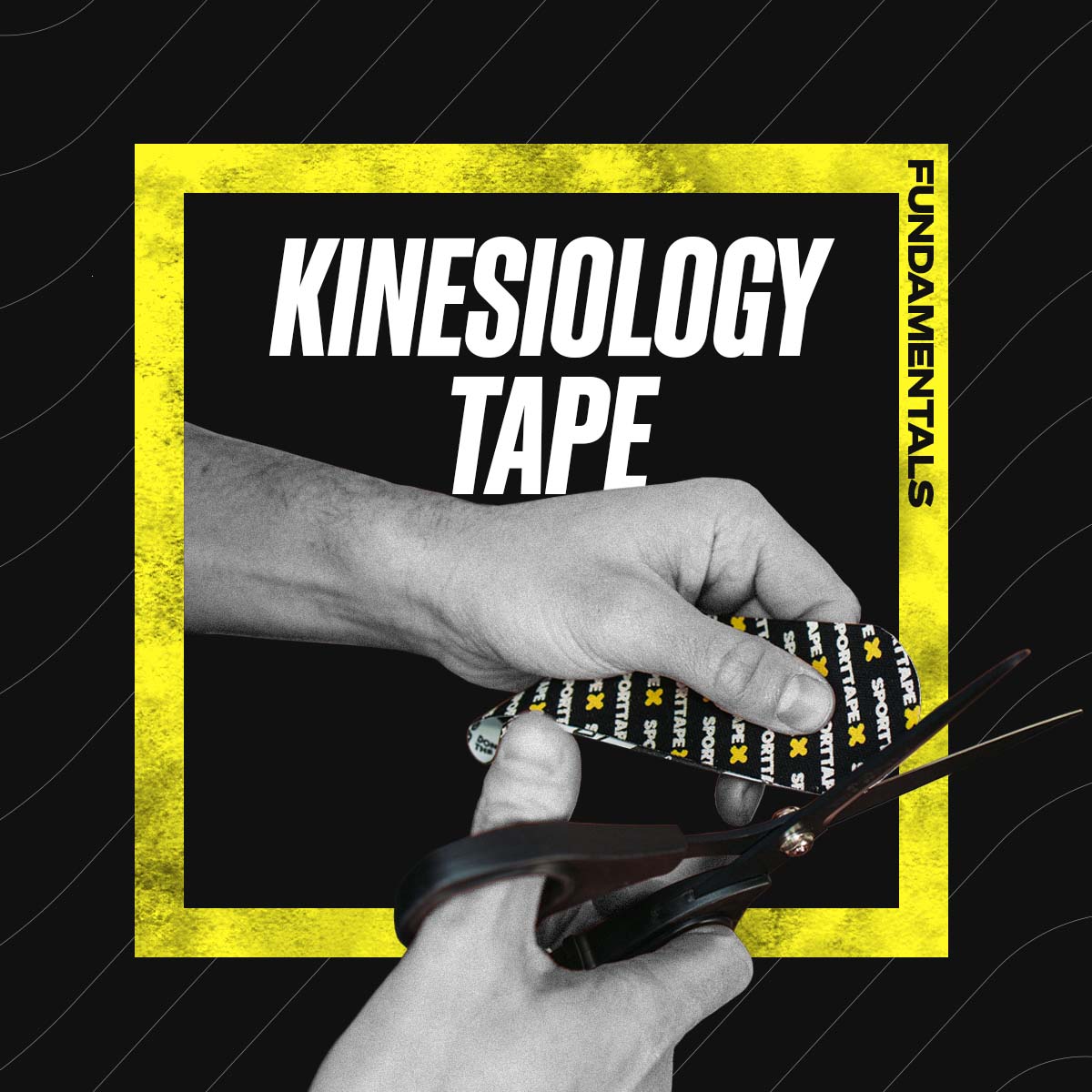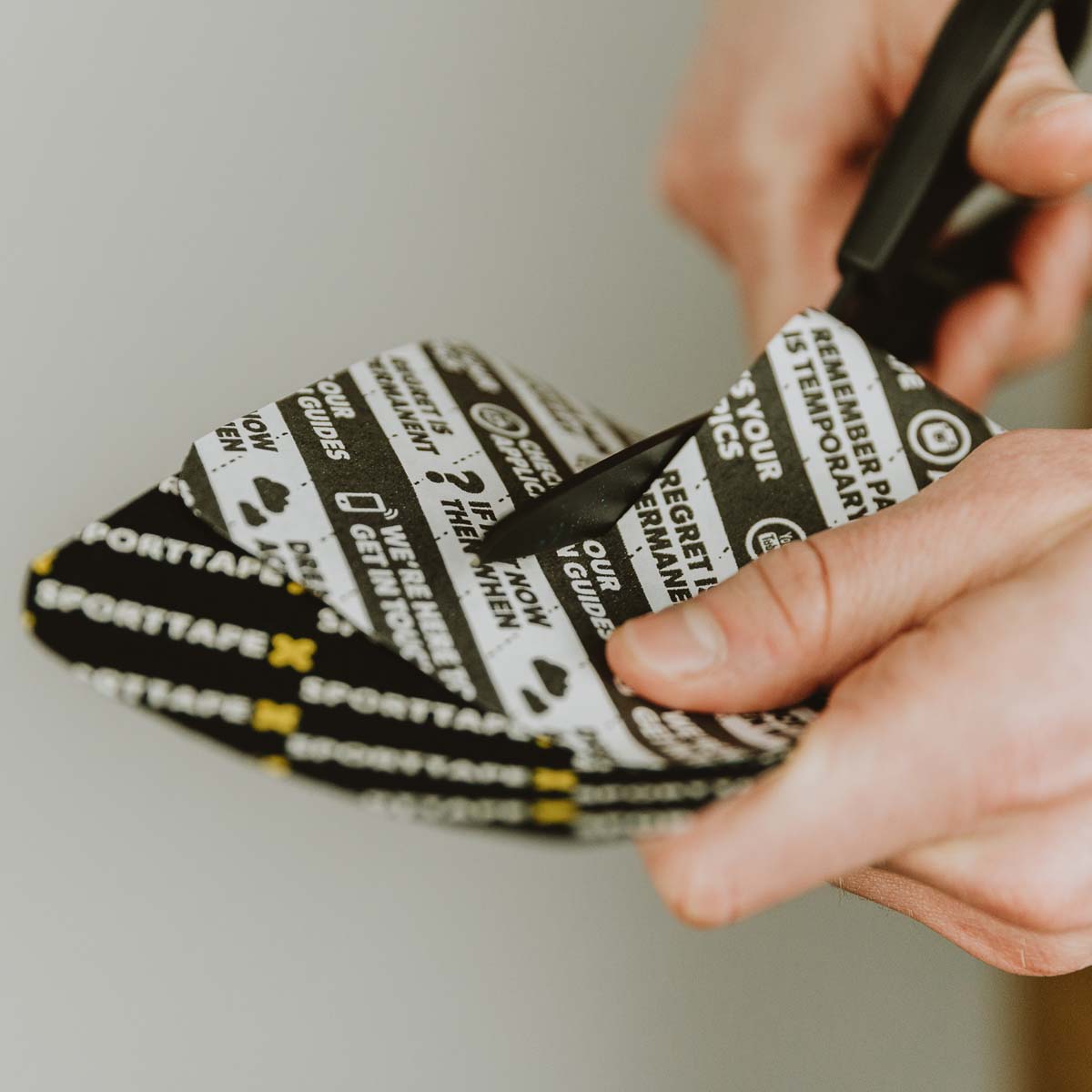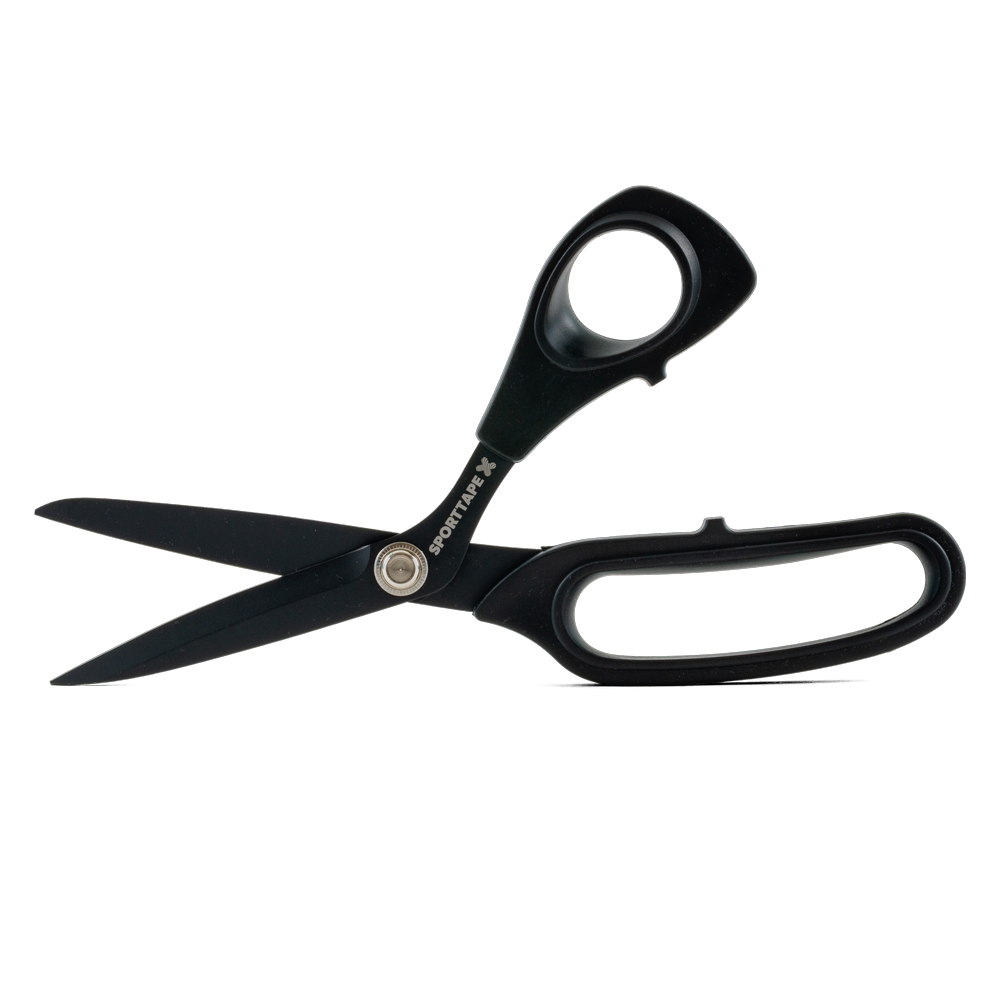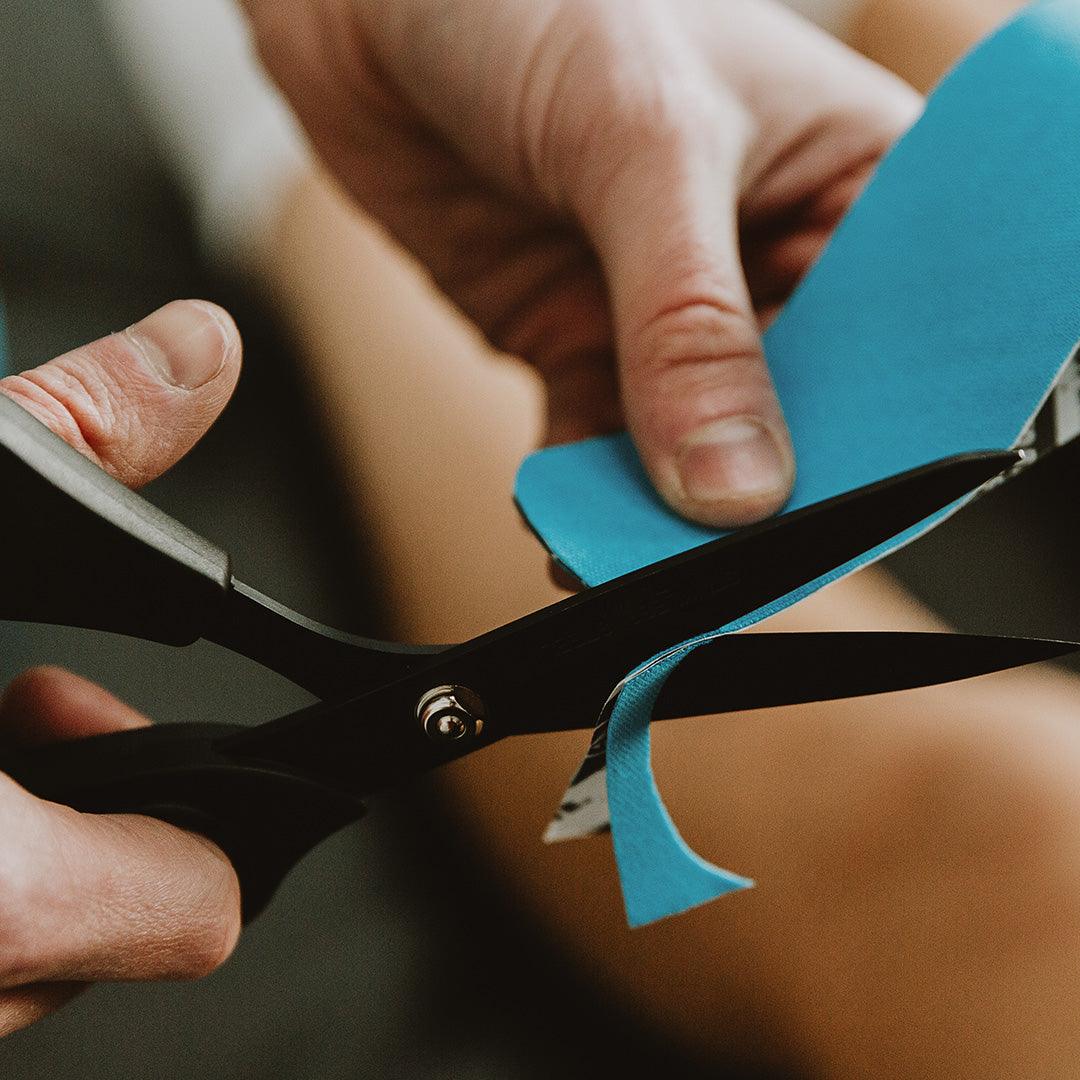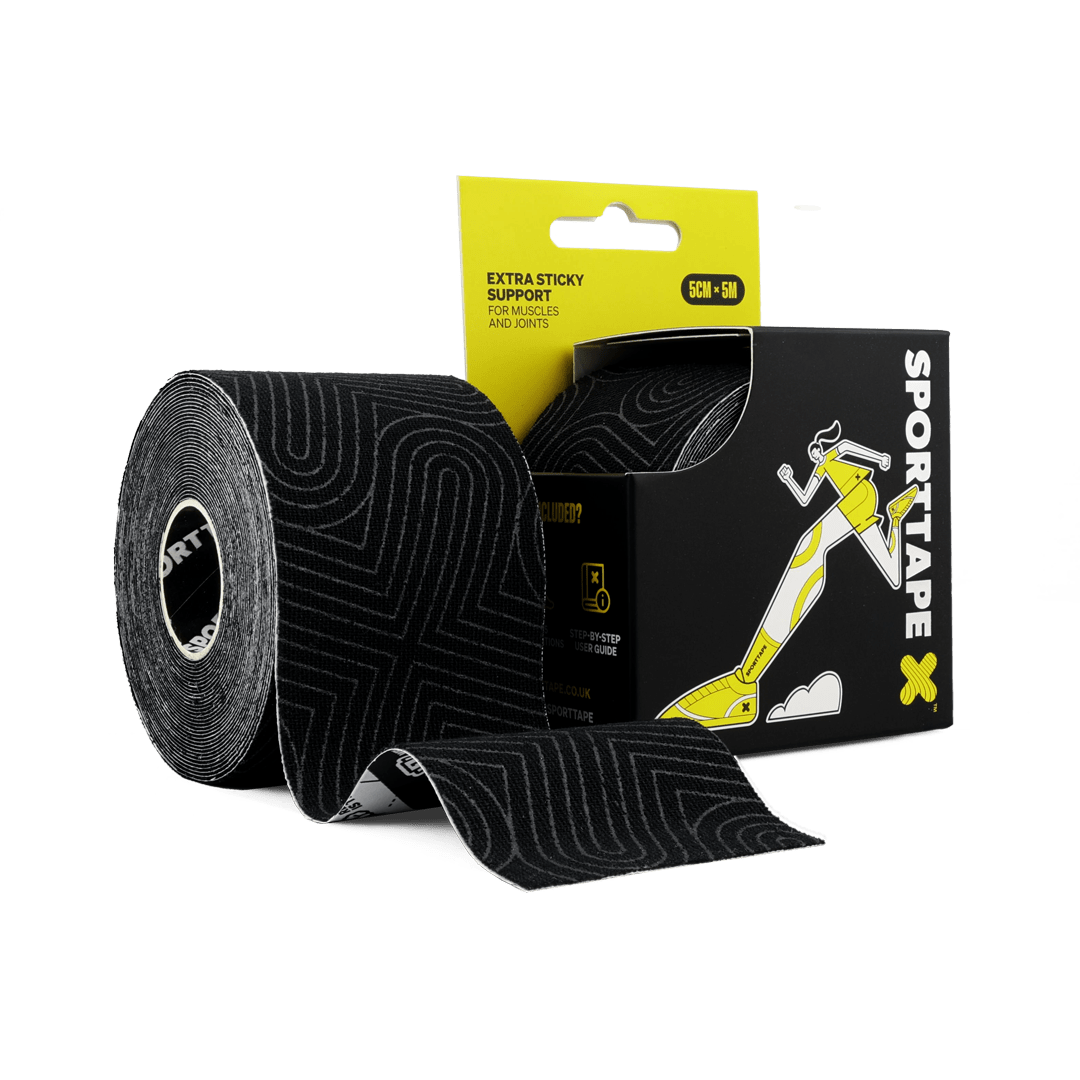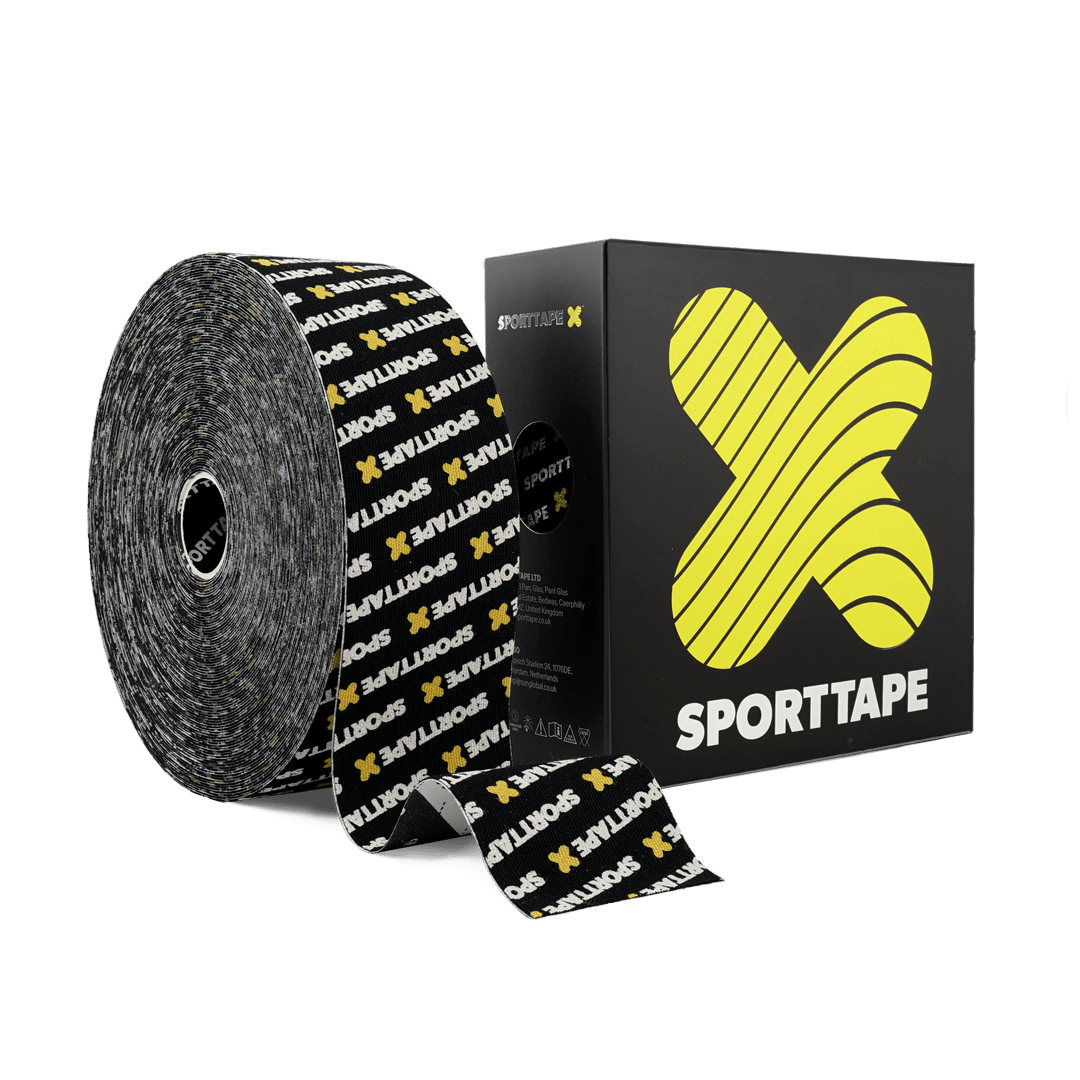What is Kinesiology Tape? What does Kinesiology Tape do? Can Kinesiology Tape help with my injury?
These are questions which we’ve heard countless times. So we’re here to tell you – what it is, where it came from, and how to tell a great Kinesiology Tape from one that will let you down. Let's turn you into a taping expert...
WHAT IS KINESIOLOGY TAPE:
WHAT IS KINESIOLOGY TAPE?
Straight up, what is Kinesiology Tape?
Kinesiology Tape is a stretchy, cotton (or synthetic) tape designed to mimic the elasticity of the skin. It’s used by athletes and therapists worldwide to provide proprioceptive feedback, pain relief and support to joints, muscles and tendons.
Kinesiology Tape has rapidly become one of the most used products in sports medicine. Gracing the bodies of athletes and weekend warriors all over the world as they strive to compete injury-free. They're still commonly made from cotton with various blends of nylon, lycra and other materials to add stretch. Some contain latex (not ours), and fabric density can vary greatly.
WHERE DID IT COME FROM?
Japanese Chiropractor Kenzo Kase invented Kinesiology Tape in 1970 as an alternative to athletic tapes that were traditionally rigid and restricted movement. Kinesiology Tape rewrote the book on athletic taping by allowing pain relief without restricting movement.
It took nearly 40 years, but Kinesiology Tape was catapulted into the spotlight at the Beijing Olympics after being worn by the USA Volleyball team. Whilst a lot of Kase’s original theories around Kinesiology Tape have now been debunked, it has become an essential tool in every therapists’ arsenal.
WHAT MAKES A GOOD KINESIOLOGY TAPE?
Not all tapes are created equal. That's especially true when it comes to Kinesiology Tape. There are 5 core items that separate great tapes from ones that are best left on the shelf. Here's exactly what you need to consider and look out for when you're looking for some.
THE FABRIC
A good fabric means a more durable tape and applications that are going to last longer and perform more effectively. Look for a tape with a high thread count.
THE ADHESION
You can’t win with a tape that won’t stick. A great tape will use a medical-grade, hypoallergenic glue, and will be water-resistant within 30 minutes of application. Also look out for a pronounced wave pattern. This wave pattern helps the effect of the tape, so it's vital.
THE STRETCH
It’s a fact that less stretch = more restriction. Kinesiology Tapes should allow freedom, without limiting your range of movement. The perfect amount of stretch is around 160%. That’s how much your skin stretches, and the closer you can match the profile of your skin, the better and more comfortable your application will be.
THE PRICE
The cost of a Kinesiology Tape is not always a clear indication of quality. If you spend less than £5 on a small roll of Tape, you’ve either got less tape than you bargained for, or a tape that’s going to fail the first 3 tests in this list. You’ll save in the long run by buying a tape that ticks all the boxes. Bonus points if your tape offers a guarantee, as if for any reason you’re not happy, you can always get your money back!
THE PACKAGING
Check the backing paper on your Kinesiology Tape. Is it just blue lines or squares? Is the spool plain with no sign of branding? That probably means that the tape has come straight from the factory to you. No bespoke materials, no change to the glue, and no quality control. Find a branded backing paper and branded spool, at least then you know your tape is from a factory that uses high-quality machinery and the latest technology.
WHAT MAKES SPORTTAPE DIFFERENT?
SPORTTAPE doesn’t just tick all the boxes. It goes above and beyond. Every detail in our Kinesiology Tape is considered from an athlete’s perspective. If it’s not needed, it’s not included. If it is, we’re going to make damn sure it’s the best.
If you want to know more about Kinesiology Tape or have a questions for us, get in touch! We're happy to help!


